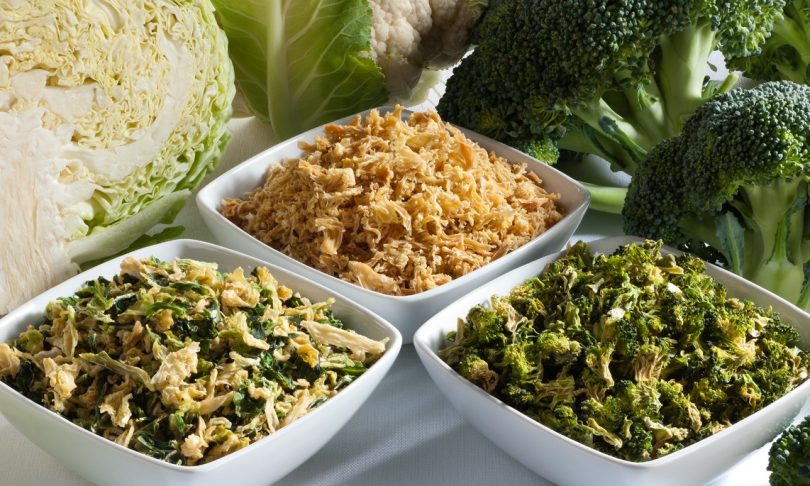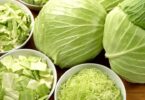The importance of vegetables to humanity has led to the search for ways on how to preserve them. After all, some are only available for cultivation and harvest at certain times of the year. Dehydrating vegetables is a very simple and common method of storing the edible parts of plants without losing valuable nutrients and dietary fiber.
Dehydrating vegetables take out water, thus preventing the growth of decay-causing mold, yeasts, and bacteria. The heat used in dehydration also slows down the spoiling process by partially inactivating the plant enzymes.
READ ALSO: 10 Amazing Benefits of Dehydrating Food
Everything You Need to Know About Dehydrating Vegetables
Benefits of dehydrating vegetables
The advantages of dehydrating vegetables include:
- keeping moisture out, preventing spoilage and decay
- enjoying year-round availability
- preserving and enhancing the vegetable’s taste
- concentrating and preserving the nutrients
- cheaper than packed, canned, or processed varieties
- added convenience in carrying, delivery, and storage
- having an all-natural food without any preservatives
- being eco-friendly (saves near-spoiling products)
Preparations before drying vegetables
1. Collecting, washing, and cutting
Purchase or harvest vegetables that are ripe enough and free from any signs of disease or spoilage. Wash with tap water to rid the plants of any pesticide residue and soil. Cut, peel, trim, shred, or slice the vegetable and remove any decayed, bruised, or hard woody parts. Cut or shred the parts equally for even drying.
2. Blanching
Blanching is the process of exposing the vegetables to water hot enough to deactivate enzymes. Again, these are responsible for the loss of flavor and color during dehydration. The process is also done to soften the plant’s cell walls for moisture to easily escape, thus shortening drying time.
There are two ways of blanching, either by water or steam. Mushrooms, green peppers, and onions are the vegetables that do not require blanching before drying.
Water blanching
Put water in a pot or kettle (about 2/3 of its capacity) and let boil. Fill a wire basket with enough cut veggies. Make sure everything still fits inside the pot. Place the vegetables inside the pot when the water starts to boil. Make sure that the plant parts are completely soaked in boiling water. Cover and blanch for about 2 to 8 minutes.
Steam blanching
Pour water into a pot or kettle until you’ve reached a third of its capacity. Start to boil the water. Now, put cut vegetables in a wire basket that fits into your chosen container—put it in once the water starts to boil. Make sure that the veggies are placed just above the boiling water’s surface. Cover and let it blanch for 1 to 8 minutes. Turning or stirring may be necessary to expose smaller parts to the steam.
3. Cooling
After blanching, collect the vegetables and cool them in cold or ice water. Drain the vegetables over a drying tray placed over a sink. The pieces should be warm to the touch but should never reach room temperature. Transfer the drained vegetables onto a dehydrator or oven tray.
Dehydrating vegetables using a food dehydrator
- Place vegetables evenly in one layer over a dehydrator tray, making sure that they do not overlap. The sizes of the plant parts should be equal for even drying. Do not mix fresh parts with the partially dried ones.
- Switch on the dehydrator and set the temperature to 140 degrees Fahrenheit.
- Insert trays inside the device and dry the vegetable for 6 to 16 hours.
- Check the temperature and appearance of the veggies at 1 ½ hour intervals.
- When drying is almost complete, check for signs of blackening or scorching. Burning affects both taste and nutritive value. Also, make sure that the temperature does not exceed 140 degrees Fahrenheit.
- Cool the veggies before trying to check their dryness.
READ ALSO: Which Food Dehydrator is Right for You
Dehydrating vegetables using an oven
- Set the vegetables evenly in one layer on an oven tray. Make sure that the pieces do not overlap. They should also be equal in size for even drying. Fresh parts should not be mixed with those already partially dried.
- Preheat the oven to 140 degrees Fahrenheit (or to the lowest possible).
- As soon as the temperature reaches 140 degrees Fahrenheit, insert the tray. Slightly leave the oven door open to release moisture and to achieve a consistent level of heat. A fan directed towards the oven can be used to increase air circulation and reduce drying time.
- Use a calibrated thermometer to check for fluctuations in temperature inside a conventional oven. Place the thermometer over the tray and observe for changes every two hours.
- Rotate or turn the trays frequently and check the drying produce from an hour to one and a half hours during the drying process.
- Drying time when using an oven is typically two to three times longer than with a dehydrator. When drying time nears its end, check for slight scorching or blackening.
- Never allow the temperature to exceed 140 degrees Fahrenheit.
- Cool the pieces before checking for dryness.
Assessing the dryness of vegetables
A vegetable is considered dry if:
- small- to medium-sized parts are brittle and hard
- large parts or chunks are tough and leathery
- thin leaves are brittle
- peas, beans, corn, and grains shatter when crushed with a hard kitchen utensil
Packing and storing dehydrated vegetables
- Make sure that the dried veggies are cool before packing.
- Dried vegetables can be packed in transparent or dark colored, screw-topped glass jars. To protect against moisture, cover the jar’s opening with a clean cloth or a clean, thin plastic sheet before screwing on the cap.
- The produce can also be packed in clean Ziploc bags or in moisture-proof freezer containers. Tin may be used, but the products must first be placed inside plastic bags.
- Dry vegetables stored in a cool, dry place will last from four months to a year. The same results can be achieved if they’re stashed in the fridge. If kept at room temperature, however, they’ll only stay fresh for one to two months.
One important reminder!
Dehydrating vegetables is something that should never be rushed. The use of a short drying time or a higher temperature would lead to what experts call “case harden”. It’s false drying in which the outer surface dries hard while the insides are moist and soft. This hurried process results in a dry vegetable that would rot or spoil while in storage.





